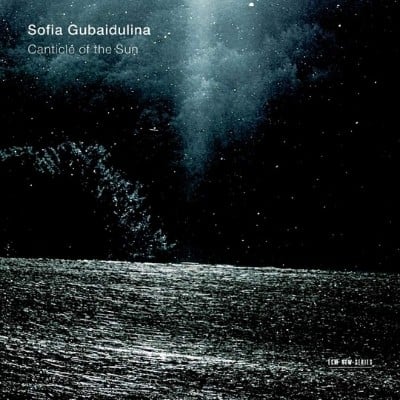The Lyre of Orpheus
(Die Leier des Orpheus) (2005)perc(2-4):crot/tamb/SD/thunder;chimes/crot/tamb/SD/glsp/xyl;bar.chimes(ad.lib.)/BD/bells/tam-t;3timp(ad.lib.)/bar.chimes/susp.cym-str(6.5.4.4.2)
Abbreviations (PDF)
Sikorski
“The Lyre of Orpheus”
for Violin, Percussion and String Orchestra
(2006)
This work forms the first part of the triptych “Nadeyka” (I: “The Lyre of Orpheus” for violin, percussion and string orchestra / II: “…The Deceitful Face of Hope and of Despair” for flute and orchestra / III: “The Banquet during the Plague” for orchestra). All three works are unified by a common idea – the correspondence between an interval and the difference tone produced by it.
It is known that any two tones sounded together will produce two others: a summation tone and a difference tone. This is, first of all, a purely acoustical fact. However, it can latently be exploited compositionally as well. Thus the minor second way down in the contra-octave produces a difference tone which is actually no longer a tone, but a rhythmical-metrical pulsation. However, we do hear a frequency of 20 Hz as a unified tone. After this comes an acoustical “no man’s land. From 10 Hz, a tone becomes a purely temporal succession of impulses. Ultimately one can even conceive of an imaginary pulsating space where the pulsation of the difference tones corresponds to the sounding intervals.
This pulsation is, of course, inaudible within the tonal area accessible to us. But it does indeed exist in physical reality. And, projected onto the tonal area which we can perceive, a specific correlation is formed between this pulsation and the sounding interval which produces the difference tone.
This circumstance has greatly fascinated me as an artist, since one can experience this correspondence in an artistic work as a metaphor for a profound correlation between processes taking place in time and processes within the sound world on the one hand, but also as a pronounced factor of formal organisation on the other hand. I sensed that two simultaneously sounding intervals were such organisational factors: a minor second and a perfect fifth. And I searched for a pitch level for these intervals at which their difference tones would lead to two different pulsating speeds forming a metrical unity. I discovered this phenomenon only in the following two instances:
It is thus shown that the difference tones of these intervals stand in the proportion of a perfect fifth to each other. The resulting pairs of difference tones (brought together within the space of an octave) provide us with this sequence of tones:
I was surprised that my spontaneous search for simple, whole-number tone proportions within one tempo led me to the chord of the so-called “lyre of Orpheus.” These are the basic intervals of the Pythagorean system. At the same time, they form a “tetraktis” (the numerical proportion 6, 8, 9, 12) and with it a basic structure that inspired Renaissance artists such as Raphael and formed the basis of the further development of European musical thinking.
One generally assumes that the strings of the lyre of the legendary singer Orpheus were tuned in this way. This is the origin of the title of my work. There are three moments in it where the strings of the lyre – D, A, E – sound as a unison of all the instruments involved. It is as if the strings of the lyre responded to the pulsation of the difference tone of the preceding minor second, and as if the pulsation taking place in the imaginary space were audible in the tonal space accessible to us.
Moreover, I use the correspondence between the pulsating difference tones and the intervals producing them in order to mark important formal moments.
“The Lyre of Orpheus” was commissioned by the Basle Festival ‘les muséiques’ and received its premiere on 6 June 2006, performed by Gidon Kremer, Andrei Pushkarev, Peter Sadlo and the Kremerata Baltica in Basle.
Sofia Gubaidulina
Reproduction Rights:
This programme note may be reproduced free of charge in concert programmes with a credit to the composer

Gidon Kremer / Marta Sudraba / Kremerata Baltica / Nicolas Altstaedt / Andrei Pushkarev / Rihards Zalupe / Rostislav Krimer / Chamber Choir Kamer / Maris Sirmais
ECM 4764662

